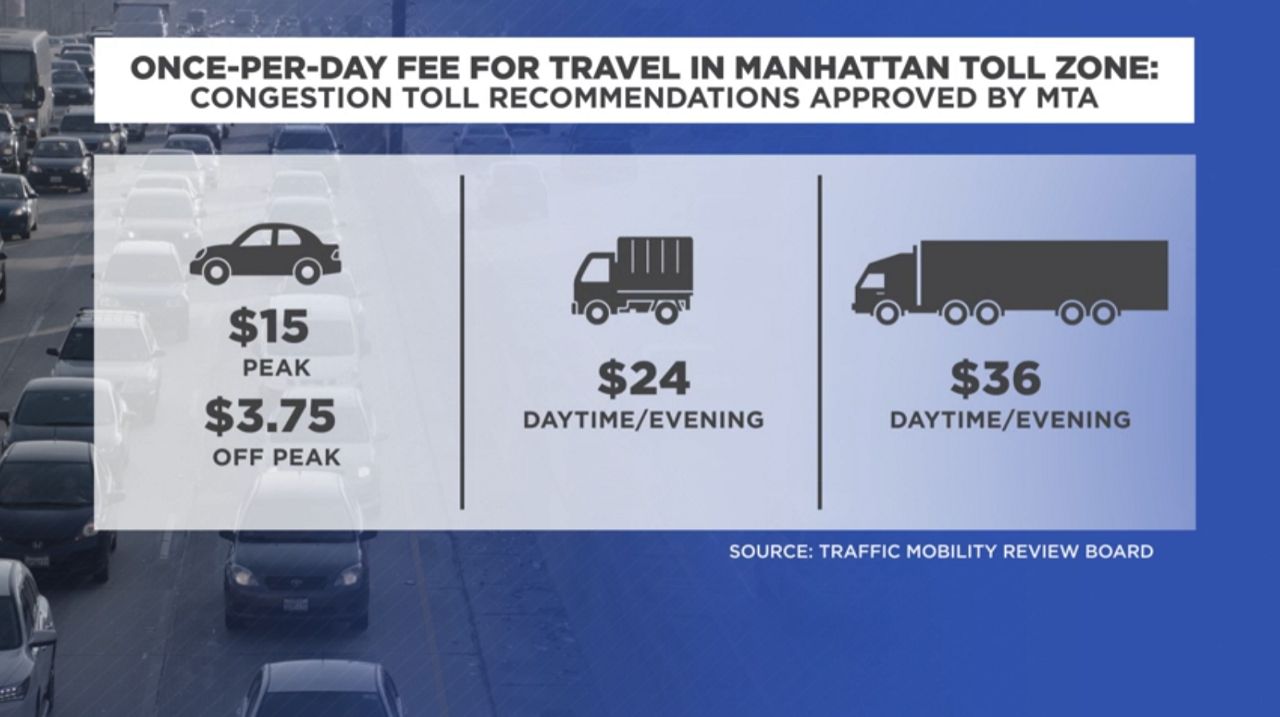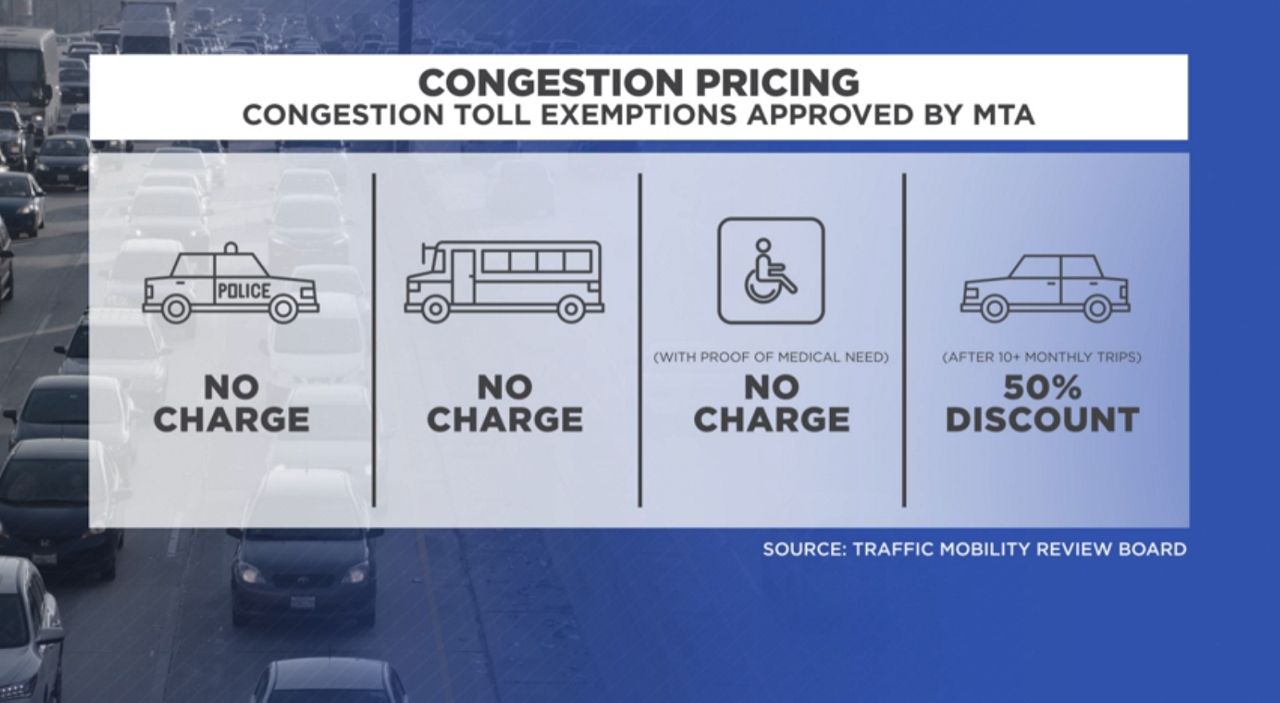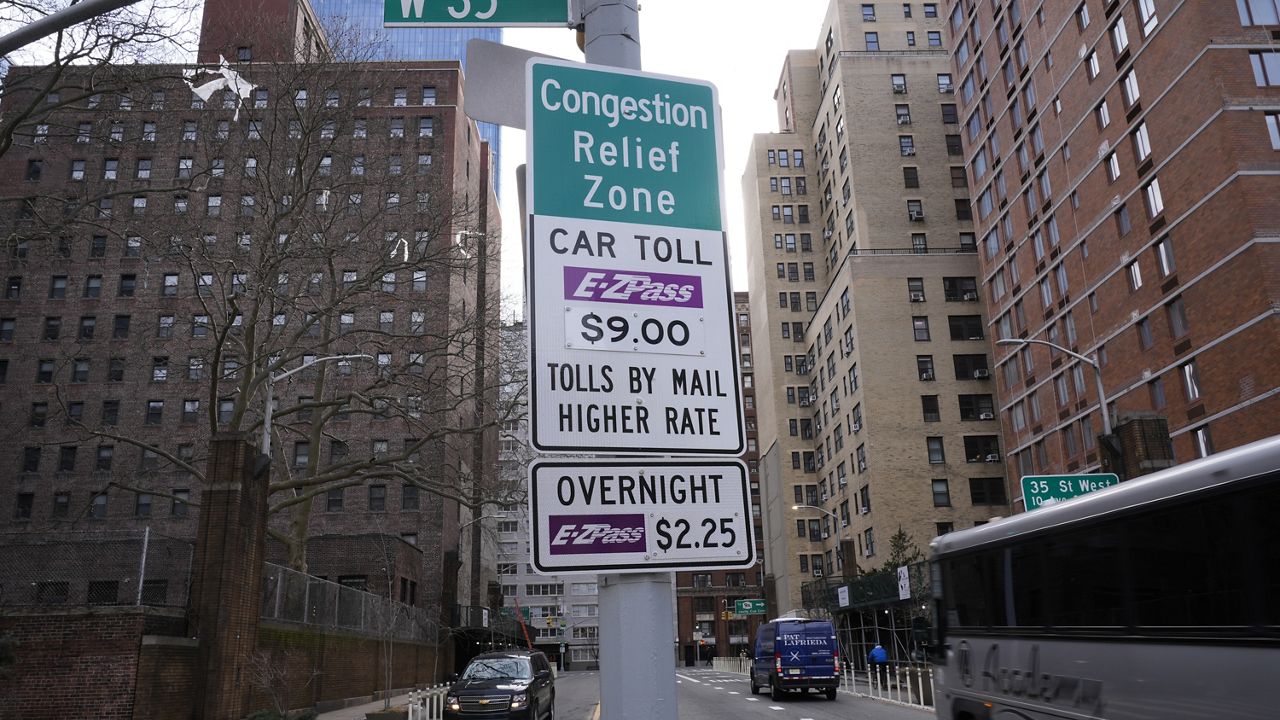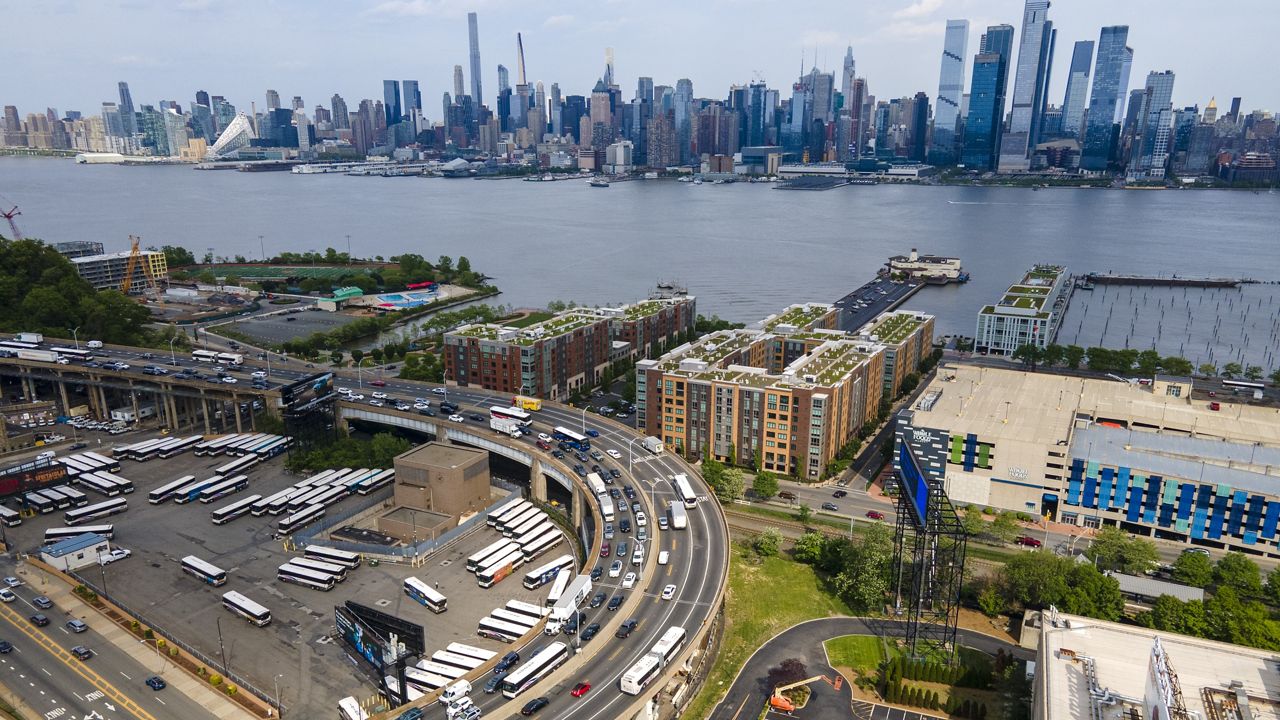Drivers will begin paying a fare to enter Manhattan south of 60th Street starting June 30, the MTA said Friday.
The transit agency's congestion pricing plan calls for a $15 base fare using E-ZPass for cars entering Manhattan south of 60th Street. Those without an E-ZPass will pay $22.50.
What You Need To Know
- The MTA on Friday announced drivers will begin paying a fare to enter Manhattan south of 60th Street starting June 30
- The Manhattan congestion pricing zone, dubbed the Congestion Relief Zone by the MTA, includes all of Manhattan south of Central Park
- The plan calls for a $15 base fare using E-ZPass for cars entering Manhattan south of 60th Street. Those without an E-ZPass will pay $22.50
The MTA had originally aimed to roll the plan out by the middle of June, but it will now take effect one second after midnight on June 30. The toll will depend on the "type of vehicle, time of day, whether any crossing credits apply, and the method of payment," the agency said.
Speaking with NY1 on Friday, MTA chairman and CEO Janno Lieber said the agency pushed the start date back "to make sure that folks who do qualify for discounts and exemptions, principally the low-income folks and people with disabilities, had an opportunity to apply and to get information about those discounts and exemptions."
"There's an application process," Lieber said. "And the another thing is, we just need an opportunity to get the word out to everybody. Not everyone has followed this story as intensely as many folks in the media. We want to make sure that people know that this is happening. It's a good thing for New York."
The Manhattan congestion pricing zone, dubbed the Congestion Relief Zone by the MTA, includes all of Manhattan south of Central Park. The congestion pricing toll will apply to all vehicles on roads at and below 60th Street, except for major highways.
The FDR Drive, the West Side Highway and the Battery Park underpass will be exempt.
In a statement Friday, the Riders Alliance, a nonprofit transit advocacy group, said congestion pricing “will be a win-win-win for all New Yorkers, commuters and visitors and bring better public transit, cleaner air, and freer moving traffic.”
“It cannot happen soon enough,” the alliance added.
The plan, which the Traffic Mobility Review Board recommended a week prior to a December vote, also includes a $24 fare for small trucks and a $36 fare for large trucks — all while carving out various discounts and exemptions for certain vehicles, such as city buses and yellow cabs.

The toll structure would apply from 5 a.m. to 9 p.m. weekdays, and from 9 a.m. to 9 p.m. on weekends. Toll rates would be 75% lower at night.
On Gridlock Alert Days, the MTA reserves the right to charge an extra 25%. The MTA announced two exemption plans in late February for New Yorkers with disabilities.
Drivers can learn more about who is eligible for discounts and exemptions and apply for them on the MTA’s website.

The agency finished submitting the final analysis, modeling, and paperwork for the plan to the feds earlier this month.
It is still facing several lawsuits aiming to stop the rollout.
Asked if he was concerned about the lawsuits, Lieber on Friday said, "You know, not really."
"This is actually a pretty easy case. We followed every letter of the federal environmental law, and on a fairness basis, it really isn't fair that New Jersey, which charges New Yorkers for the Garden State Parkway and the [New Jersey] Turnpike, would get to say what we can do with our own streets," he said. "We have to make sure that people who do have to drive can get around. This will make it easier to drive around New York."






)


